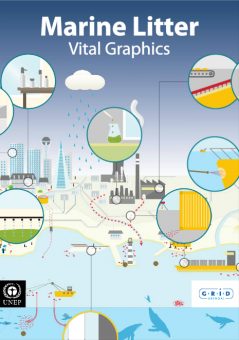
Marine Litter Vital Graphics, highlights why it is important to act now if we want to avoid living in a sea of plastic by mid-century. Though short-term fixes do exist, any lasting solution to the problem of plastic pollution must include tackling it as its source.
Marine Litter Vital Graphics, co-authored by the United Nationals Environment Programme (UNEP), and Grid Arendal underscores the need to take a hard look at how we produce and use plastic.
The world population in 1950 was 2.5 billion and global production of plastic was 1.5 million tonnes. Today there are more than 7 billion people in the world and plastic production exceeds 300 million tonnes annually. Marine Litter Vital Graphics report states that if the trend continues, by 2050 we will accumulate another 33 billion tonnes of plastic.
To adequately address this issue, we need “upstream” governance actions that can help reduce the amount of plastic that enters the environment. Recycling is one example, but that captures only a small portion of waste plastic. Other actions include putting in place financial disincentives to produce and use of plastic materials. Marine plastic pollution is already harming marine life and threatening biodiversity. There is an urgent need to reverse this trend to avoid further damage.
Marine Litter Vital Graphics follows a UNEP report that looked at how large plastic debris and “microplastics” are omnipresent from the Arctic to the Antarctic. It advocates for taking preventative action to safeguard our planet and oceans.
For more informations visit unep.org.
Source: unep.org

